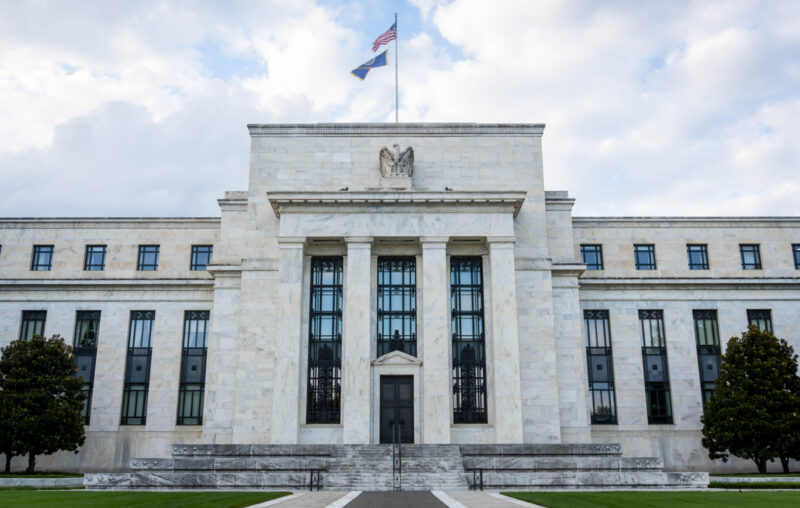The Fed Isn’t Powerless

In a recent article at Axios, Neil Irwin asks why interest rate increases haven’t tamed inflation. Inflation remains high despite eight rate-hikes by the Fed over the past year. The latest personal consumption expenditure price index (PCEPI) data shows the price level rose 0.6 percent in January, which is 7.2 percent annualized.
“Something strange is going on when the Fed can tighten that much to achieve that little, in terms of bringing down demand,” Irwin writes. This “raises important questions about the Fed’s ability to accomplish the price stability goals it is assigned.”
Dig a little deeper, however, and the mystery isn’t so mysterious. The Fed isn’t out of ammo — far from it. Ongoing inflation is the result of surging aggregate demand. Rate-increases haven’t yet curbed it, because monetary policy hasn’t been all that tight.
It’s bizarre to worry about Fed impotence amidst the largest aggregate demand surge in a generation. Nominal GDP (total spending at current market prices) is not only elevated, it’s growing significantly faster than previously. At $26 trillion, aggregate demand is somewhere between 3 and 8 percent above the level consistent with its pre-pandemic trend growth rate. What caused the jump? Extraordinary monetary policy, of course! The Fed has plenty of ammo, as we’ve learned the hard way.
Irwin writes that today’s persistent inflation is “the mirror image” of stubbornly low inflation during the 2010’s. But the Fed’s inability to create inflation from 2008-2020, and its inability to lower inflation today, is only apparent. Monetary policy was tighter in that period than Irwin and others suggest.
Following the 2008 crisis, the Fed massively expanded its balance sheet, causing bank reserves to explode. But it also paid banks not to lend, by offering interest on reserve balances. If the Fed hands me $3 trillion in reserves and I bury it in my yard, guess what happens to aggregate demand? Pretty much nothing. The same happens if new liquidity sits idle in bank vaults.
In a follow-up piece, Irwin and coauthor Courtney Brown acknowledge reader comments suggesting it can take 6 to 12 months for monetary policy to affect the economy. But the “long and variable lags” caution about monetary policy is overblown. It massively understates the power of expectations. Although it is fashionable in some circles to pooh-pooh the importance of expected inflation for determining actual inflation, the alternative theories are worse. They require economic actors to be totally myopic or predictably exploitable. In reality, as Scott Sumner argues, credible monetary policy immediately affects expectations, and hence can jolt the economy right away.
We know the Fed has a credibility problem. Based on comments by Chairman Powell and other members of the FOMC, it appears the Fed’s 2-percent “average” inflation target is asymmetric. The central bank will tolerate higher-than-2-percent inflation, but is loath to put up with lower-than-2-percent inflation. There’s a basic arithmetic problem here: 2 percent can’t possibly be the long-run average inflation rate if the Fed is targeting 2 percent asymmetrically.
Markets have noticed. Inflation expectations have crept up in recent weeks. Markets in goods, services, and financial instruments continue to operate under the assumption of high inflation simply because the Fed has not credibly signaled otherwise. Inflation expectations still matter.
The most important thing the Fed can do to restore its lost credibility is continue tightening. Assuming the natural rate of interest is between 0.25 percent and 0.5 percent, the target for the fed funds rate should be 7.45 to 7.70 percent today. The balance sheet should continue to shrink as assets mature and the Fed refrains from purchasing new ones. Just as important, the Fed should stop distracting itself with irrelevant policy issues such as DEI and climate change. The Fed can persuade markets it means business if it takes these steps.
The Fed has plenty of gas in the tank. If it adheres to tried-and-true monetary policy strategies, it can whip inflation. If it continues its destructive and misguided innovations, however, price pressures will plague us for some time. Responsible students of monetary policy must vigorously resist the “powerless Fed” myth. All it does is absolve central bankers of responsibility for what, on the basis of good theory and mounting evidence, is primarily their fault to begin with.








